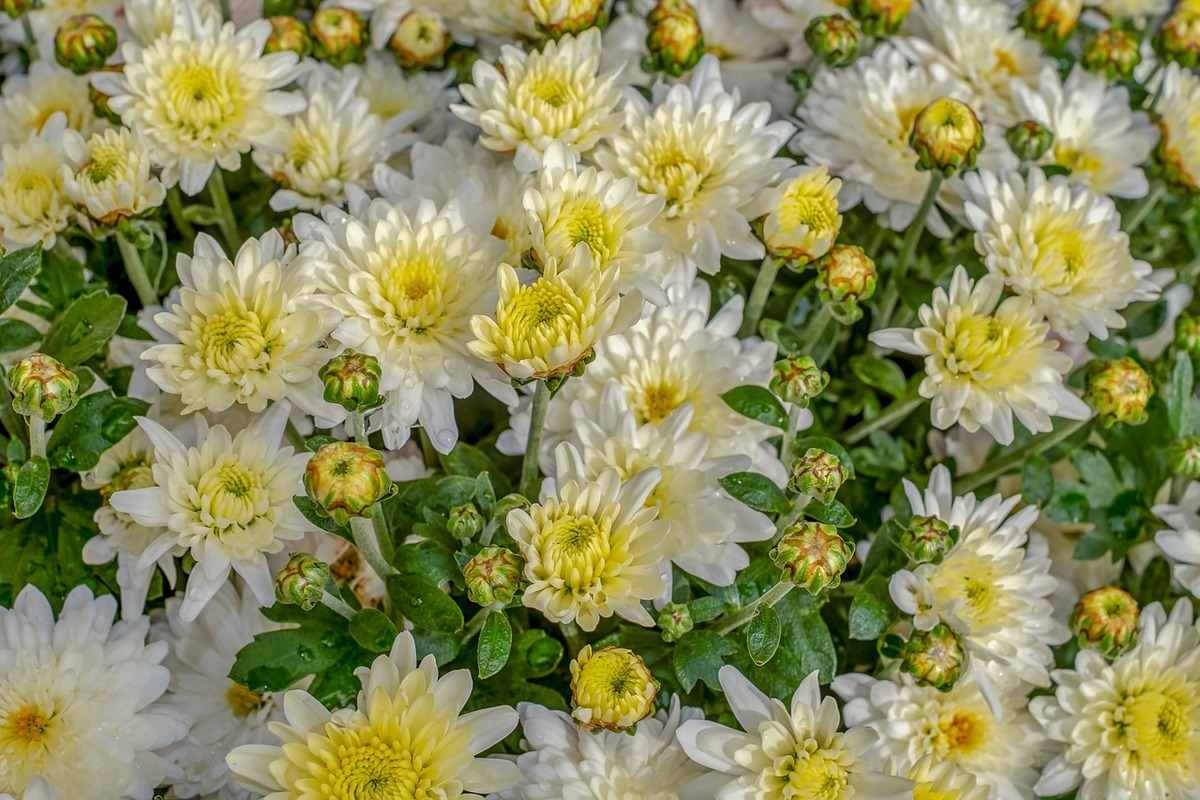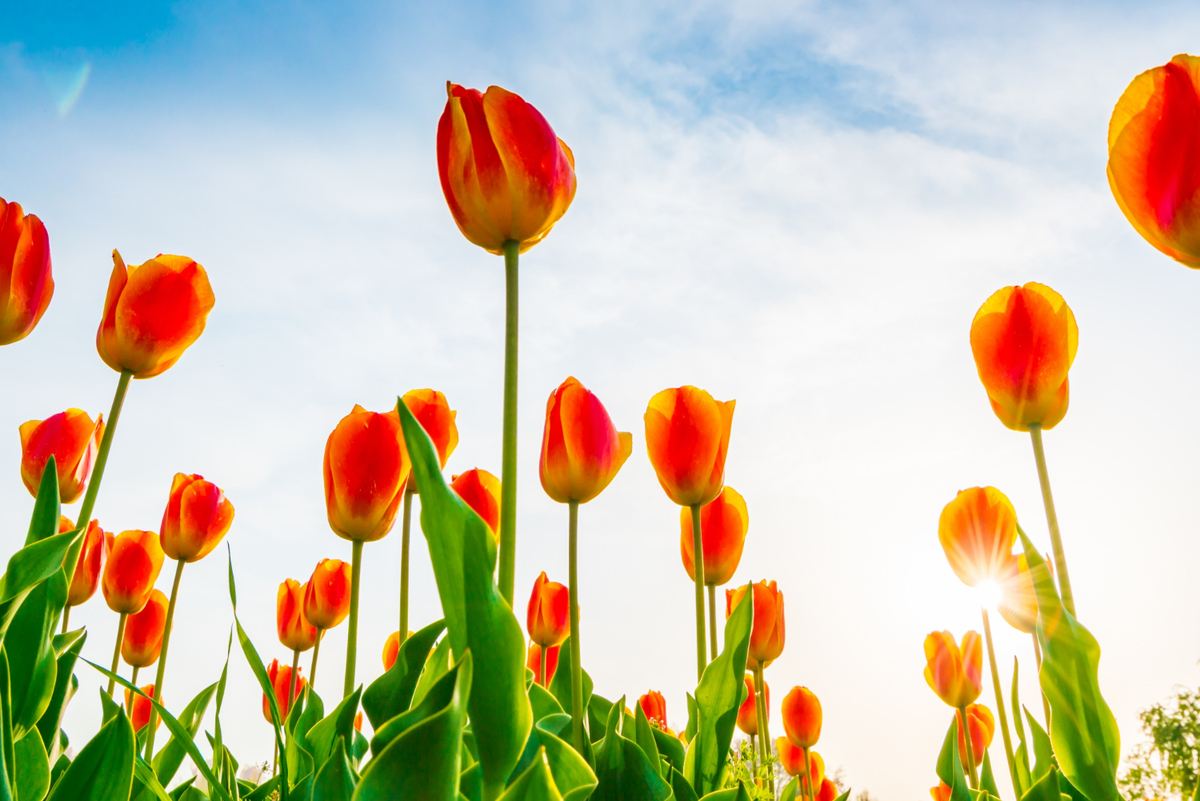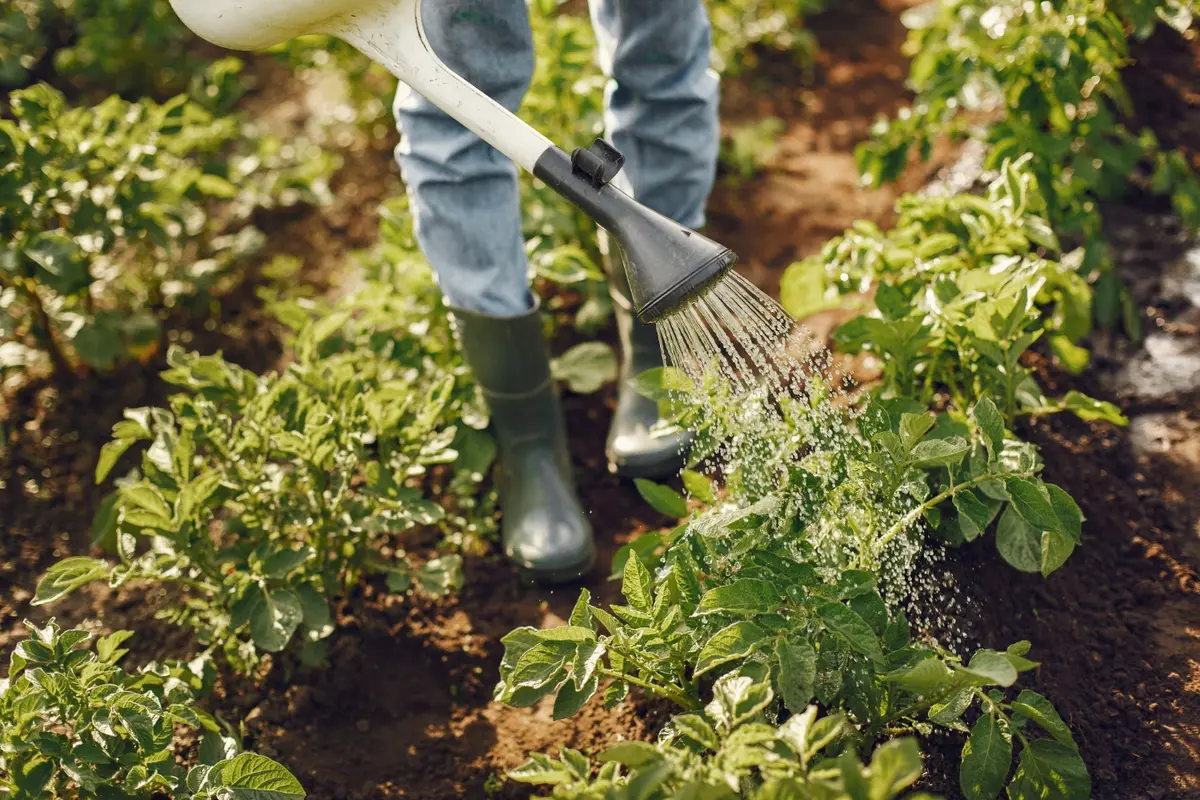Chrysanthemums, also known as mums, are enchanting flowering plants that are appreciated for their wide range of colorful and lively blossoms. These decorative perennial plants belong to the Asteraceae family and are originally from Asia and northeastern Europe. Chrysanthemums exhibit a diverse array of colors, shapes, and sizes, encompassing everything from single blooms resembling daisies to pom-pom or cushion-like forms. Their exceptional durability and adaptability to different climates have made them highly renowned. In numerous cultures, chrysanthemums hold symbolic significance, representing happiness, positivity, and a long life.
Growing chrysanthemums in a greenhouse or controlled environment offers an optimal setting to nurture these dynamic and adaptable flowers. Proper care and attention to environmental factors make a greenhouse an excellent space for cultivating chrysanthemums, ensuring a colorful and flourishing display. In this article, I will give you a complete guide on how to grow chrysanthemums in a greenhouse.
Table of Contents
How to Grow Chrysanthemums in a Greenhouse

1. Variety Selection
Selecting the right chrysanthemum varieties is crucial for successful greenhouse cultivation. It is essential to consider factors such as the type of bloom, its size, and color. Popular varieties include cushion, reflex, and decorative types, each offering a unique aesthetic appeal. Selecting disease-resistant varieties that are well-suited for greenhouse conditions ensures a healthier crop.
2. Greenhouse Site Preparation
Thoroughly prepare the site for the greenhouse, paying careful attention to every detail. It is crucial to select the most suitable soil, ensure it has good drainage, and maintain proper ventilation. By ensuring adequate ventilation, the greenhouse can effectively minimize the accumulation of humidity, thus reducing the likelihood of fungal diseases. Additionally, factors like the orientation and layout of the greenhouse should be considered as they contribute to creating an environment favorable for the growth of chrysanthemums.
3. Planting Chrysanthemum Cuttings
Chrysanthemums are commonly reproduced through the use of cuttings. Place the cuttings into the properly prepared soil, making sure to plant them at the correct depth. It is important to maintain adequate spacing between the plants to promote proper air circulation and minimize the risk of diseases.
4. Temperature Control
Temperature regulation plays a crucial role in the successful cultivation of chrysanthemums in a greenhouse, exerting its influence on every stage of the plant’s growth and flowering process. Chrysanthemums thrive within a specific temperature range of 15°C to 21°C during the day, with slightly cooler temperatures at night. It is imperative to maintain this optimal temperature range to facilitate the plant’s optimal development and abundant bloom production. To achieve this, greenhouse operators must invest in dependable climate control systems encompassing heaters for colder periods and ventilation for warmer periods, ensuring a consistent and suitable environment for the chrysanthemums. Any abrupt fluctuations in temperature can impose stress on the plants, resulting in undesirable consequences such as delayed flowering or bud abortion.
5. Lighting
Proper lighting is crucial when cultivating chrysanthemums in a greenhouse to achieve the best possible growth and blooming. Chrysanthemums are considered long-day plants, meaning they need a specific duration of light exposure to initiate and sustain the flowering process. In a greenhouse setting, it becomes crucial to incorporate additional lighting, particularly during shorter daylight periods, to fulfill these requirements. High-quality artificial lights with full-spectrum capabilities, such as high-pressure sodium (HPS) or light-emitting diodes (LEDs), can be strategically positioned to supplement natural sunlight effectively.
6. Watering
Chrysanthemums prefer consistently moist soil, however, it is crucial to strike a balance to prevent waterlogging, which can result in root rot. For greenhouse cultivators, it is recommended to establish a regular watering routine to maintain the soil’s moisture level without saturating it. The frequency of watering should be determined by various factors, including the plant’s size, the temperature within the greenhouse, and the type of soil employed. It is advisable to water the plants in the morning, allowing the leaves to dry before nightfall to minimize the risk of fungal diseases.
7. Fertilization
Chrysanthemums have specific nutritional needs that vary throughout their growth stages. In the early stages, it is crucial to provide them with a well-balanced, water-soluble fertilizer that contains a higher proportion of nitrogen. This particular composition aids in the development of healthy foliage. However, as the plants transition into the budding and flowering stage, it becomes imperative to utilize a fertilizer that has a higher concentration of phosphorus and potassium. These nutrients are essential for promoting robust flower formation and enhancing the overall blooming process. It is advisable to regularly apply a complete and well-balanced fertilizer, with special attention given to micronutrients like iron to prevent any deficiencies. Furthermore, the incorporation of organic amendments and the use of slow-release fertilizers can contribute to a sustained availability of nutrients for the chrysanthemums.
8. Pruning and Pinching
Regular pinching is a common practice that is usually initiated when the chrysanthemums reach a height of approximately 6 inches. It involves the careful removal of the growing tips of young shoots to stimulate the growth of lateral branches. This technique ultimately leads to the development of a fuller and more compact plant with an increased number of flower buds. Moreover, pinching serves the purpose of synchronizing the flowering process and enhancing the overall visual appeal of the chrysanthemums. On the other hand, pruning involves a more selective approach, where specific stems or leaves are deliberately removed to effectively manage the size of the plant and redirect its energy towards desired areas, thereby promoting the growth of vigorous and vibrant blooms.
9. Support Structures
Chrysanthemum stems can become heavy with large blooms. By strategically positioning robust stakes or trellises within the greenhouse, crucial support is provided, preventing the stems from bending or breaking under the weight of the flowers. This becomes particularly crucial as chrysanthemums reach their peak of blooming, guaranteeing the overall well-being of the plants and optimizing the visual impact of the vibrant blossoms. Appropriately implemented support structures not only contribute to the structural soundness of the chrysanthemum plants but also facilitate improved air circulation, thereby reducing the risk of diseases within the greenhouse environment.
10. Pest and Disease Management
Chrysanthemums are susceptible to various pests, including aphids, mites, and thrips, as well as diseases like powdery mildew and botrytis. It is important to regularly examine the plants for any signs of infestation, such as distorted leaves or discoloration. To naturally control pests, it is recommended to implement preventive measures, like introducing beneficial insects such as ladybugs and predatory mites. For mild infestations, neem oil and insecticidal soaps can be used. Furthermore, maintaining appropriate spacing between plants and ensuring proper ventilation can help reduce humidity, thus minimizing the risk of fungal diseases. In case symptoms appear or as a preventive measure, fungicides and bio-fungicides can be applied. Lastly, it is crucial to timely remove and dispose of any affected plant parts as this contributes to disease control.
11. Harvesting
Chrysanthemum blooms are ready for harvesting once they have reached their optimal stage of development. When the petals are fully opened, and display vibrant colors. To ensure a successful harvest, it is recommended to use sharp and clean gardening tools like shears to cut the stems at a 45-degree angle. This type of cut promotes water uptake and helps maintain the overall health of the flowers. It is important to time the harvesting process when the blooms are in their early stages, as this will contribute to their longevity. Additionally, it is crucial to leave a portion of the stem intact during the harvesting process to prevent any damage to the plant and encourage future growth.
FAQs
What is the lifespan of a chrysanthemum flower?
The lifespan of a chrysanthemum flower is based on several factors, including the level of maturity during harvest, environmental conditions, and the care provided after harvesting. In general, if properly maintained, a freshly cut chrysanthemum flower can persist for a period ranging from one to three weeks. Regularly changing the water, pruning the stems, and ensuring a cool surrounding, the longevity of these flowers can be prolonged.
What temperature kills chrysanthemums?
Chrysanthemums exhibit sensitivity towards extreme temperatures, whereby both excessively high and low temperatures can pose potential risks to their overall well-being. When subjected to high temperatures, typically exceeding 32°C, chrysanthemum plants may experience heat stress and dehydration. This prolonged exposure to elevated temperatures can result in the foliage wilting, petals becoming scorched, and an overall reduction in the plant’s vitality. On the other hand, low temperatures can also prove detrimental, particularly if they drop below freezing point. Chrysanthemums are vulnerable to frost damage, which can lead to the rupture of cells and tissue damage, ultimately causing the foliage to turn black or become discolored.
Do chrysanthemums purify air?
Chrysanthemums do not play a significant role in enhancing the quality of indoor air. If you are looking for plants that purify the air consider other options such as spider plants, snake plants, or peace lilies. These plants have been extensively researched for their ability to effectively filter out common indoor pollutants.










